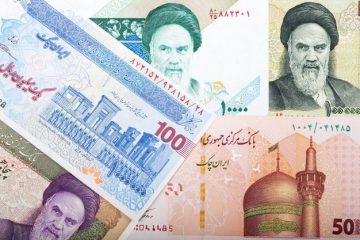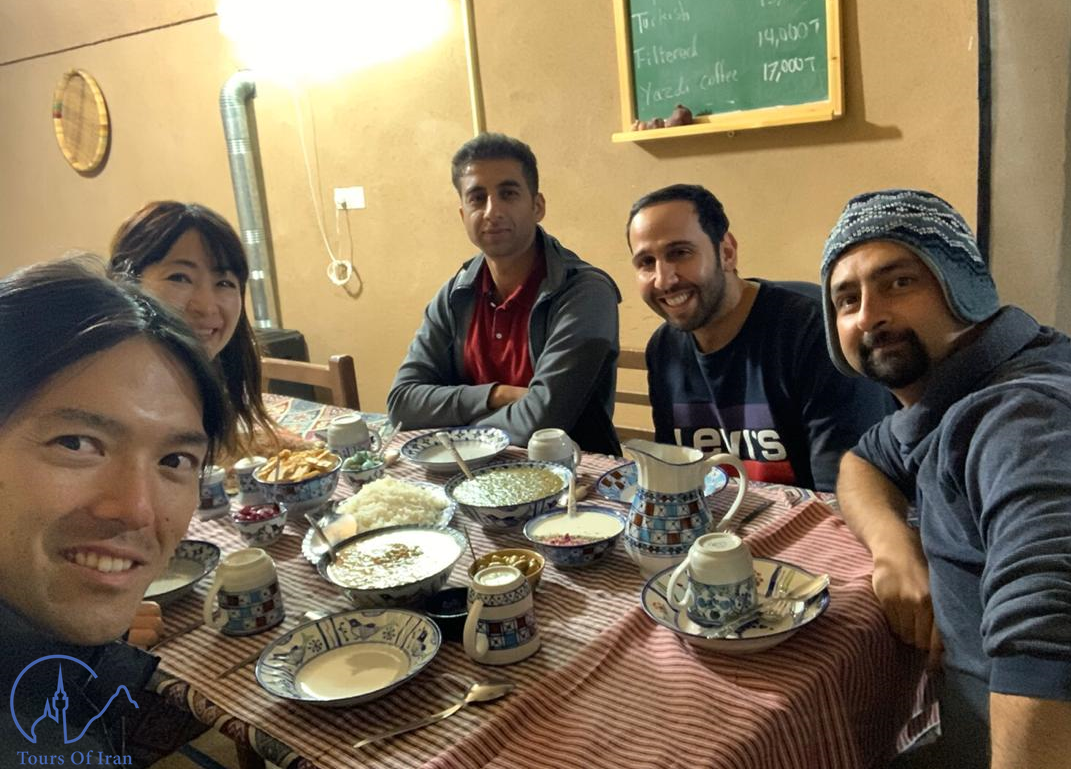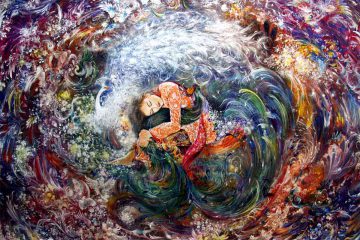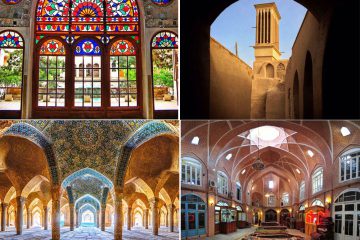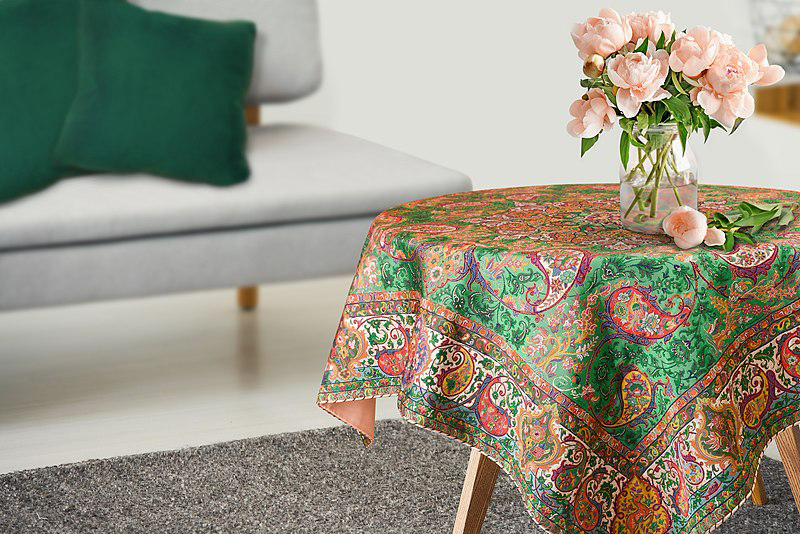
Top 10 Iranian Handicrafts
Iranian Handicrafts: Iran’s rich culture and way of life can be attributed to its extensive history as one of the world’s most advanced civilizations. Today, Iran has managed to capture global attention, and the continued growth of various art forms is undoubtedly linked to its historical legacy. This legacy positions Iran among the leading nations in various creative fields, including ceramics, calligraphy, weaving, and painting.
In this article, we aim to showcase Iran’s most exquisite handicrafts, renowned worldwide for representing the country’s ethnic and national culture. Handicrafts are essentially artistic creations produced using simple tools and local materials through manual labor. These unique items differ significantly from mass-produced goods, offering a distinct appeal to those interested in these crafts.
Iran, with its culturally rich history and deep historical roots, has played a pivotal role in nurturing regional handicrafts throughout the ages, ultimately leading to the recognition of over 3,000 different types of Iranian handicrafts worldwide.
The Rich History of Iranian Handicrafts
Iran’s 5,000-year-old cultural heritage is vividly reflected in its art and architecture, which have undergone significant historical development. The world has come to appreciate the outstanding works of Iranian artists, such as Persian carpets, Minakari (silver carvings), miniatures, Khatamkari, and Ghalamzani (metalwork).
Iran houses a wealth of historic crafts, each showcasing the depth and diversity of Iranian traditional arts that have flourished throughout its long and illustrious past. Here, we present 10 well-known Iranian handicrafts:
Khatam Kari: Iran’s Marquetry Marvel
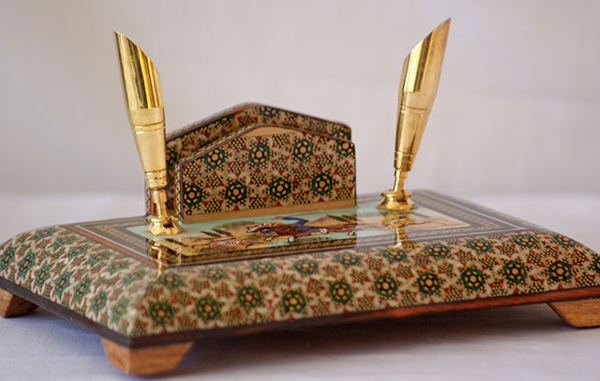
Khatam Kari involves inlaying tiny bone, metal, or wood fragments onto various surfaces, making it one of Iran’s most exquisite handicrafts. This art employs thin sticks of wood, camel bone, and brass to create intricate geometrical patterns, often in the form of star-shaped designs.
These sticks are combined to form triangular beams, which are then assembled into cylinders with geometric patterns, like a six-pointed star within a hexagon. Shorter cylinders are created by cutting longer ones, which are then crushed and dried between wooden plates before being plated and lacquered. Khatam Kari is one of Iran’s most intricate crafts, with up to 250 pieces of metal, bone, ivory, and wood per cubic centimeter.
Ghalam Zani: The Elegance of Metal Engraving with Hammer and Nail
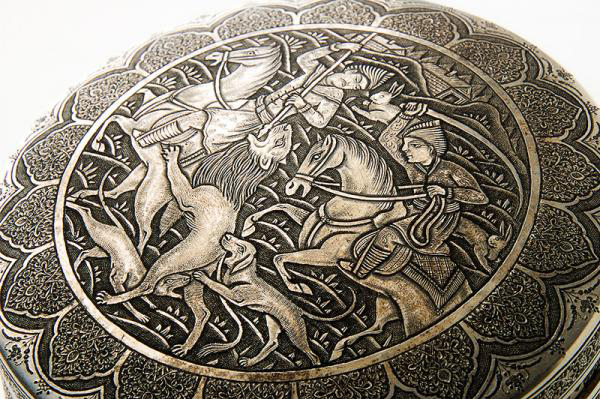
Ghalam Zani is a Persian art that involves hammering intricate motifs into metals such as silver, brass, copper, and gold. Persian metal engraving is the best-documented Iranian artistic form from the Islamic era, with roots dating back to the Safavid, Sassanid, and Seljuk kingdoms.
This ancient Iranian craft has been revived over the past 80 years, thanks to masters like Mohammad Taghi Zoufan and Mohammad Oraizi. You can find a wide range of skillfully engraved items in Iranian handicraft shops, including candy boxes, plates, candlesticks, and trays, especially in cities like Tehran, Isfahan, and Shiraz.
Mina Kari: Metal’s Enamored Artistry in Vivid Painted Elegance
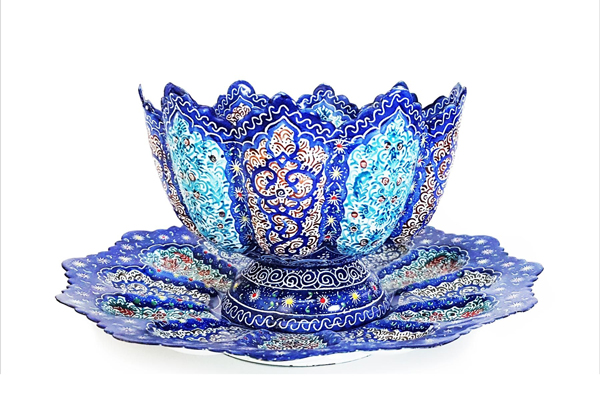
Mina Kari, also known as enameling, is a renowned Iranian handicraft practiced primarily in Shiraz and Isfahan. It involves fusing vibrant colors onto metals and ceramics to embellish their surfaces. The process includes applying a glass-like colored coat, known as “mina,” which is then fused onto various metals, including copper, through heating.
This art is utilized to create vases, home decor, jewelry, wall-hanging plates, and confectionery dishes. Notably, the doors and chandeliers in old palaces, homes, and temples in Iran often feature Mina Kari, a handcraft with roots dating back to the Sassanid era.
Shokrollah Sanizadeh, a skilled artisan in Isfahan, has continued the legacy of his famous ancestors, creating exquisite pieces. In recognition of his work, a stamp celebrating Iranian handicrafts was crafted based on one of his masterpieces from 2008 to 2009, subsequently designated as a national treasure. These artists often display their work on Chahar-Bagh Street and near Naqsh-e Jahan Square.
In summary, Iran’s rich cultural history has given rise to a diverse and captivating world of traditional handicrafts. These crafts not only serve as expressions of art but also embody the legacy and creativity of a nation that has played a significant role in preserving and advancing these time-honored traditions.
Firoozeh Koubi: The Elegance of Turquoise Stone Inlay
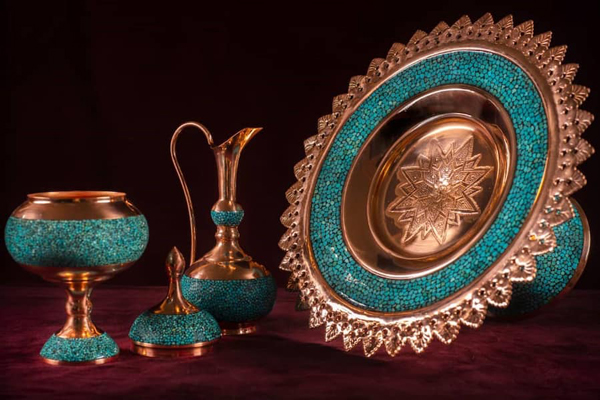
Firoozeh Koubi stands as one of Iran’s most celebrated and exquisite handicrafts. It is a favored souvenir among Persian handicraft vendors. This art involves meticulously placing small turquoise fragments in a mosaic pattern on various metals, including copper, brass, silver, and gold, creating a captivating shimmer that sets these items apart.
The applications of these tiny gemstone fragments extend beyond ornamental plates and utensils; they also adorn chic accessories like earrings, rings, and necklaces. Turquoise stone inlay plates are notably affordable in Iran, making them a popular choice among tourists. The allure of turquoise, with its distinctive color, has made it a coveted gemstone and decorative element for centuries. Firoozeh Koubi, relatively new with a history of about 70 years, thrives in the city of Isfahan.
Iranian Miniature: A Grand Tradition in a Small Format
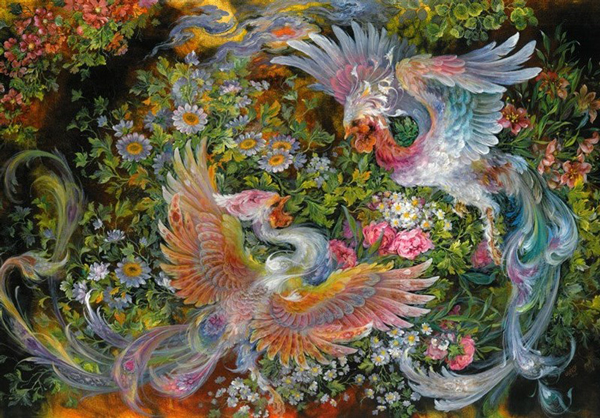
A Persian miniature encompasses any artwork, whether it’s a small painting on a piece of paper, an illustration from a book, or a piece crafted from camel bone or other materials, intended for inclusion in a collection of miniatures known as a “Murraqa.”
Many of the techniques employed in Persian miniatures hark back to Western and Byzantine traditions of illuminated manuscripts on a small scale. In Iran, this tradition extends to items like jewelry boxes and miniature paintings on various surfaces. Persian wall painting has a long history, but miniatures have enjoyed better preservation and are now the most recognizable style of Persian painting in the Western world, with many outstanding specimens found in Western and Turkish museums.
The influence of the Mongol invasions in the 13th century spurred miniature painting, blending elements from China, and by the 13th century, it had evolved into a significant Persian art form. Its pinnacle came in the 15th and 16th centuries. The tradition persisted, albeit with Western influences, and a few artisans continue the practice today.
Iranian Carpet Weaving: The Tale of Silk and Wool Knotting
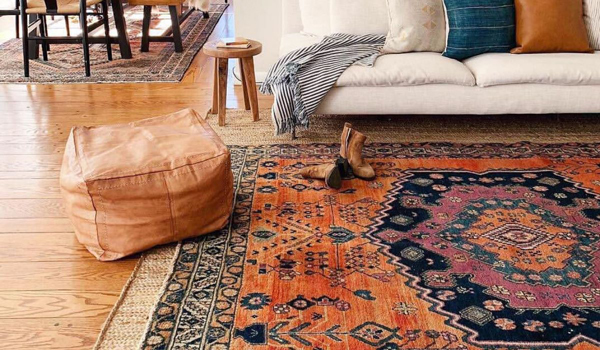
Among Iranian handicrafts and Persian art, none is more renowned in the West than carpets. Europeans first encountered Persian carpets in the 15th century, solidifying the notion that Iran is unrivaled in carpet craftsmanship. The origins of carpet weaving in Iran are shrouded in history, with the oldest known Iranian carpet dating back to around 500 B.C., named the “Pazyryk” after the Siberian archaeological site where it was found in the tombs of Scythian leaders.
The value of Iranian carpets is closely tied to their designs. Skilled weavers often create a paper model of a quarter of the carpet’s surface before commencing weaving, whereas nomadic weavers often rely on improvisation. The carpet consists of a central area and edges, which can be further divided into three sections.
Iranian carpets boast a rich variety of patterns, reflecting a poetic worldview and a deep belief in the power of symbols through intricate design and attention to detail. Gardens play a pivotal role in many Persian carpet designs. According to historical accounts, a grand carpet portraying a classic Persian garden was created for the audience hall of the king’s palace, symbolizing the idea of paradise. This treasure fell into the hands of the Muslim Arabs when they conquered the Persian capital of “Ctesiphon” in 637.
Today, the main hubs for carpet weaving are Iranian cities like Isfahan, Qom, Kashan, Kerman, Tabriz, and Yazd, as well as nomadic regions like Bakhtiari and Qashqai.
The quality of the wool is a defining factor in a rug’s durability and aesthetic appeal. Thanks to Iran’s production of top-quality carpet wools, Iranian carpets have long been sought after and remain one of the most iconic items to acquire in Iran.
Termeh Weaving: The Opulence of Woven Textiles

Termeh, an artisan craft originating from Yazd, is a vibrant fabric distinguished by its intricate designs, particularly the distinctive paisley pattern. Crafted from high-quality threads, this fabric combines materials such as silk, fluff, and wool to create a soft and visually appealing textile.
Before mass-produced clothing and textiles flooded the market, Termeh enjoyed considerable success, driven by its popularity among the upper echelons of society. Termeh weaving, a delicate and time-consuming art form, has been a cherished traditional skill in Iran since the Safavid period.
Ghalamkar: Unveiling Hand-Printed Textiles in Iran
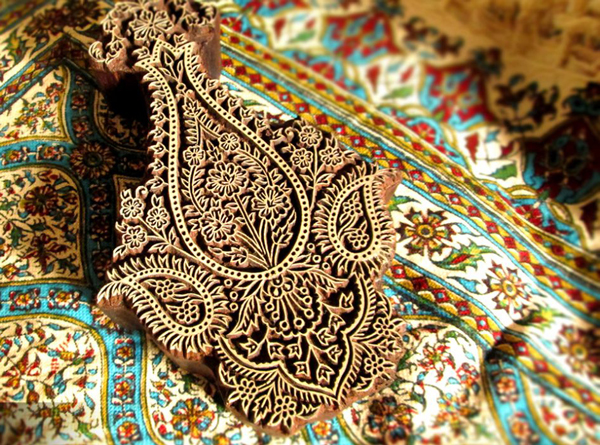
Among Iranian handicrafts, Ghalamkar stands out as one of the most renowned. This craft involves cloth printing using intricately patterned wooden stamps. These stamps are typically carved from pear wood, prized for its flexibility, durability, and firmness. Each Ghalamkar studio houses a wide array of designs, including geometric patterns, depictions of flora and fauna, arabesques, pre-Islamic themes, scenes of polo matches, hunting, and even verses from Persian poetry.
The printed fabric undergoes a thorough steaming process for a minimum of one hour to set the patterns firmly. After this, the material is transported to the riverside, where it soaks and is stored in basins for complete saturation. As a final step, the pieces are rinsed once more in the river, ensuring that the colors remain stable.
The number of stamps used on a tapestry can range from hundreds to tens of thousands, depending on its size and intricacy. For example, an attractive piece measuring two meters by 1.4 meters may require anywhere from 580 to 4,000 stampings. Ghalamkar, one of the most celebrated Iranian handicrafts, is predominantly produced in Isfahan.
Give Weaving: The Art of Crafting Hand-Woven Footwear
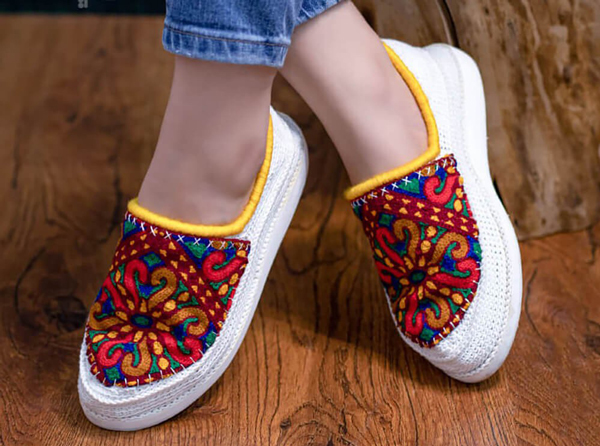
Giveh, a lightweight and comfortable shoe, is handwoven by Iranian artisans using a distinctive material, typically carpet yarn. This ancient Iranian handicraft has its roots in remote regions and has traditionally been a modest home-based industry. Until a few decades ago, this footwear was a common choice across the country. Thanks to the microscopic holes in the materials used for Giveh, they offer excellent breathability, making them ideal for hot summer days. This Iranian craft is practiced in various Iranian towns, including Shiraz, Zanjan, Kermanshah, and more, with a range of color options.
Iranian Pottery: Exploring Clay-Based Artistry
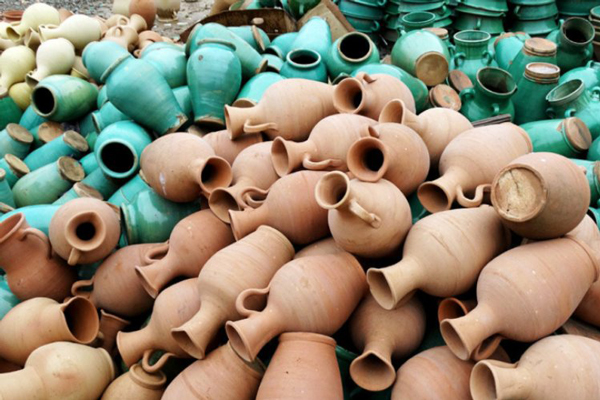
Pottery has a storied history in Iran, dating back to around 4000 B.C. when early agricultural societies on the Iranian plateau began crafting clay vessels to meet their needs. Before the widespread use of glass production, clay was the primary material for making bowls and pitchers.
Today, pottery is one of the most beloved Iranian handicrafts. The process involves crafting clay, or various clay mixtures, by hand or on a pottery wheel. In the branch of Iranian handicrafts known as “glazed pottery,” the shaped items are dried and then baked at temperatures of around 800°C. Subsequently, the finished pottery is glazed and fired once more at higher temperatures, between 900°C and 1100°C, to create a lustrous and long-lasting finish.
One of the most recognizable patterns in Iranian pottery is the azure blue glaze seen on Shahrezai ceramics from Isfahan. These ceramics feature unique floral and avian motifs not found anywhere else in the world. The city of Yazd is a significant hub for distributing ceramics to the Iranian market, offering pieces adorned with depictions of the sun, chickens, and fish, often replacing native bird designs. Semnan ceramics are celebrated for their elegant beauty, featuring jars and clay figures adorned with various bird and natural designs, all crafted by skilled artisans. Iranian pottery boasts an extensive history, with Saveh ceramic jars being renowned for their distinctive designs and colors.
Lalejin is the epicenter of top-quality Iranian pottery, offering thin and golden designs for vases and sculptures. The durability of Lalejin handicrafts, particularly those with semi-embossed motifs, is unmatched, as their colors and glazes stand the test of time.
Where to Purchase Iranian Handicrafts: A Guide to Local Markets and Stores
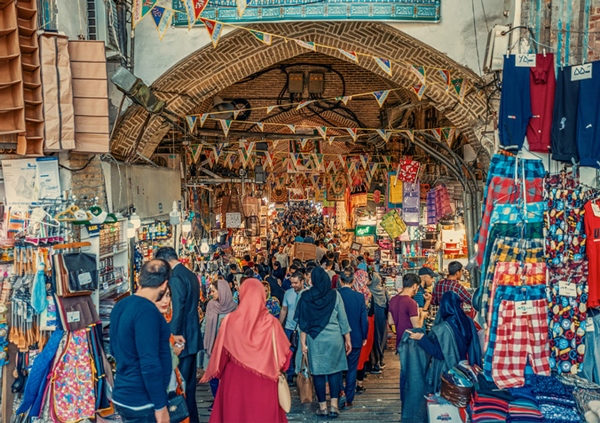
Iran boasts a rich tapestry of handicrafts and arts, a testament to the nation’s enduring cultural heritage. Persian civilization, renowned for its beauty and deep history, has nurtured a thriving artisan industry. While strolling through Iran’s bustling bazaars brimming with shops offering these exquisite handcrafted items is a delightful experience, for travelers, it can pose a dilemma.
The allure of Persian handicrafts is undeniable, and it’s challenging to leave Iran’s vibrant bazaars without acquiring a keepsake. These markets are a fixture in many major Iranian cities, including Isfahan, Shiraz, Tehran, Hamedan, and more.
Preserving Iran’s Rich Heritage: Handicrafts as Souvenirs and Gifts
Every city across the globe weaves a tapestry of stories in its unique way. These stories are told through the city’s architecture, the dialect of its residents, their clothing, and their social customs. Yet, it is within a city’s handicrafts and souvenirs that history and tradition are most vividly brought to life. The exchange of gifts is a longstanding tradition and remains a timeless gesture of goodwill. When presenting gifts in Iran, consider the following points.
Handcrafted goods possess a unique allure that mass-produced items simply cannot replicate. As the younger generations increasingly encounter counterfeit products, the appeal of Iranian handicrafts as gifts has surged, making them highly sought after.
A handcrafted gift provides ample room for personalization. Imagination is the key, and while it may be challenging to recreate precisely the unique masterpiece you envision in your mind, it is entirely feasible with handicrafts.
Handmade items are enduring, timeless gifts that never go out of style. Today’s generation is well-versed in technological advancements, making it easier for them to anticipate future presents. However, gifts born from your imaginative musings are less predictable and more cherished.
The recipients of these gifts will forever treasure the moment you presented them and preserve the gift for a lifetime, ensuring you remain irreplaceable even when separated by distance. Such gifts are not transient or disposable.
Whether you bestow them upon a sibling, a parent, a significant other, or anyone deserving of your affection, the joy they experience upon unwrapping a gift of profound significance shared between you both will cement your bond.
Bear in mind the insights provided above when selecting a handicraft as a gift for a loved one.
Safeguarding Iranian Traditions: The Role of Handicrafts in Contemporary Iran
Traditional arts and handicrafts have evolved in response to the demands of life, maintaining their core traditions while incorporating beliefs, vision, philosophy, manners, and customs influenced by the surrounding environment and the way of life of the people.
Many handcrafted items created by Iranian artisans have been popular across various regions of the nation for centuries. Yet, some of these crafts have languished in the shadows, only surviving in ancient structures due to a lack of support and marginalization.
By choosing handicrafts as meaningful gifts, you contribute to the preservation of endangered arts and crafts that are on the brink of obscurity. These crafts have the potential to find new applications and consumption patterns, offering a bridge between tradition and innovation. It’s crucial to pass down these skills to the next generation, fostering creativity and ingenuity.
This is a significant reason why visitors gravitate toward traditional culture and handicrafts. Traditional arts and crafts provide a unique and powerful sense of serenity and security.
Furthermore, handicrafts serve as tangible souvenirs, sharing the cultural aspects of travel with both domestic and international tourists. The act of buying souvenirs and gifts is an integral part of travel and tourism, not only bearing economic significance but also acting as a cultural ambassador to the world at large.


